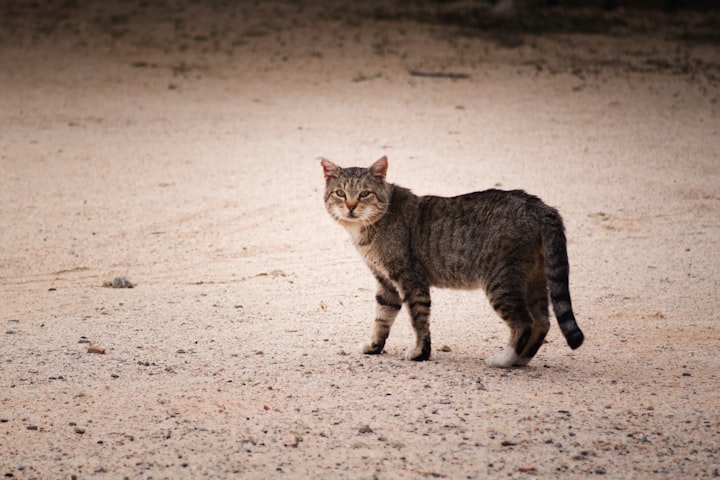
I read that Chicago has a rat problem. Though some might immediately think of their local government, I'm pretty certain the post referenced a problem of the rodent variety. According to the Hill, "The Windy City has ranked number one on pest control company Orkin’s list of the “rattiest cities” in the U.S. for six consecutive years, as Chicago has had the most rodent pest treatments." Though being number one is often a coveted position, in this case, it's best to be ranked much further down the list. Chicago is taking some significant measures to curb the rat population, a measure that might spark nightmares in those averse to felines.

The Tree House Humane Society kicked off a program releasing feral cats into areas experiencing rat problems. All of the cats were humanely captured, spayed or neutered, and then if the cats cannot thrive in a home or shelter environment, they become a part of the Cats at Work program. The Humane Society pairs cats with business and property owners, with the owners pledging to be responsible for the kitty's well being. While the cats occasionally catch rodents, their presence alone is a deterrent to the rat population.
Some consider this means of ridding the city of rodents a brilliant solution because its solution is environmentally friendly. I would say those who support this decision have never had a run in with a feral cat.

I'm not a diehard cat lover. During my childhood, my family seemed to alternate between cats and dogs. I prefer dogs. However, I do have fond memories of two cats, one a gray long-haired Persian named "Smokey" and a black and white cat named "Patches." Patches jumped on the piano bench and then walked up and down the keys when she wanted to go outside. But then, there were the feral cats. My cousins lived on a farm and feral cats or barn cats as they were called, ran freely on the property. If you approached one, it darted under a bush or scrambled up a tree. If you happened to catch one, you were lucky to come away from that encounter with all of your appendages. Pets they were not. But, feral cats pose greater problems than refusing to be cuddled.

According to the Times-Picayune, "Feral, free-roaming cats have been documented by dozens of studies to be indiscriminate killers of wildlife and the cause of at least 63 species extinctions, according to a 2016 analysis of invasive species impacts." Cats are proven hunters, but studies have shown that rats are not their primary prey.
A 2013 study by the U.S. Fish and Wildlife Service and the Smithsonian Conservation Biology Institute found that feral cats (mostly unowned) are the single largest human-caused threat to wildlife. A 2011 review of wildlife crises on islands determined that cats helped cause the decline or extinction of 123 species of songbirds, parrots, seabirds and penguins; 25 species of reptiles and 27 species of mammals, including a lemur and a bat. That hurts biodiversity, which has been shown to play a role in food security, the control of infectious disease and successful adaptation to climate change. (https://tinyurl.com/3fuc76j9)

There's also a correlation between feral cats and a person's mental health. Outdoor cats sometimes carry a dangerous parasite that has been linked to schizophrenia, Alzheimer's, memory loss and learning problems. Fuller Torrey, a psychologist and the associate director of research at the Stanley Medical Research Institute says, "Children that had cats when they were small are more likely to develop schizophrenia or bipolar disorder. New results suggest that people who commit suicide are also more likely to have antibodies to T. gondii." T. gondii or Toxoplasma gondii shares the same family as the malaria parasite. T. gondii is transmitted to warm-blooded hosts, including human, through contact with cat feces or by ingesting undercooked meat. If you live in a region heavily populated by feral cats, you might reconsider walking barefoot through the sandbox at the local park.
Sometimes solutions cause greater problems, and it appears releasing one thousand feral cats may cause more problems than the actual rat population. The City of Chicago should implement a plan laser focused on targeting the problem of rats instead of unleashing an army of cats to devastate the bird, rabbit and squirrel population. There are other ways of getting rid of a rat problem. Set out traps. Seal up holes in houses and buildings. Remove outdoor food supplies. Even something as simple as sprinkling mint around the house can be a deterrent to unwanted rodents. If all else fails, call in a professional exterminating company like Orkin, they have pest control down to a science.
Sadly, the chosen method of rat eradication will also lead to a diminished community of desired and loveable creatures. The songbirds will start singing the blues...And though feral cats might be somewhat successful at chasing off the rats, it certainly isn't the purrfect choice.
About the Creator
Bryan R..
Husband. Father. Music and Youth Pastor. I enjoy writing as a hobby.






Comments
There are no comments for this story
Be the first to respond and start the conversation.